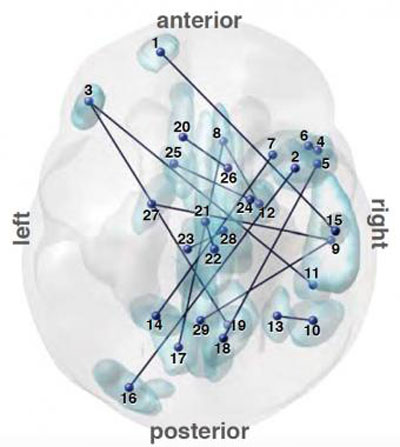Functional Brain Scans may Help Detect Autism in Adults
By MedImaging International staff writers
Posted on 04 May 2016
An innovative computer algorithm could be the key to implement brain scans as a means to identify autism spectrum disorder (ASD), according to a new study.Posted on 04 May 2016
Developed at Advanced Telecommunications Research Institute International (Kyoto, Japan), and Brown University (Providence, RI, USA), the neuroimaging-based algorithm can classify different subject sets using functional magnetic resonance imaging (fMRI) to analyze thousands of brain network functional connections (FCs). When the researchers examined the scans of people with and without ASD, the algorithm found 16 key interregional FCs that allowed it to identify with high accuracy those who had been diagnosed with autism, and those who had not.

Image: A map of the brain helps distinguish patients diagnosed with ASD (Photo courtesy of Nature Communications).
The neuroimaging classifier, which blends two machine-learning algorithms, was first developed with the aid of 181 adult volunteers at three sites in Japan, and was then applied to a group of 88 American adults at seven sites; all the study volunteers with autism diagnoses had no intellectual disability. The classifier worked well in each population, averaging 85% accuracy among the Japanese volunteers and 75% accuracy in the Americans. The researchers calculated that the probability of such a degree of cross-population performance purely by chance was 1.4 in a million.
To further validate the classifier, the researchers examined how it related to the Autism Diagnostic Observation Schedule (ADOS), a clinical tool based not on markers of biology or physiology, but instead on a doctor’s interviews and observations of behavior. They found that the 16 FCs identified by the classifier related to attributes of importance in ADOS. They also found that 41% of the specific brain regions in which the 16 FCs resided were within the cingulo-opercular network, which participates in the conceiving of other people, face processing, and emotional processing. The study was published on April 14, 2016, in Nature Communications.
“The MRI scans required to gather the data were simple. Subjects only needed to spend about 10 minutes in the machine, and didn’t have to perform any special tasks; they just had to stay still and rest,” said co-corresponding author Professor Yuka Sasaki, PhD, of Brown University. “Despite that simplicity, and even though the classifier performed unprecedentedly well as a matter of research, it is not yet ready to be a clinical tool. The accuracy level needs to be much higher; 80% accuracy may not be useful in the real world.”
The researchers clarified that the developed ASD classifier does not distinguish individuals with major depressive disorder and attention-deficit hyperactivity disorder from their controls, but moderately distinguishes patients with schizophrenia from their controls.
Related Links:
Advanced Telecommunications Research Institute International
Brown University














